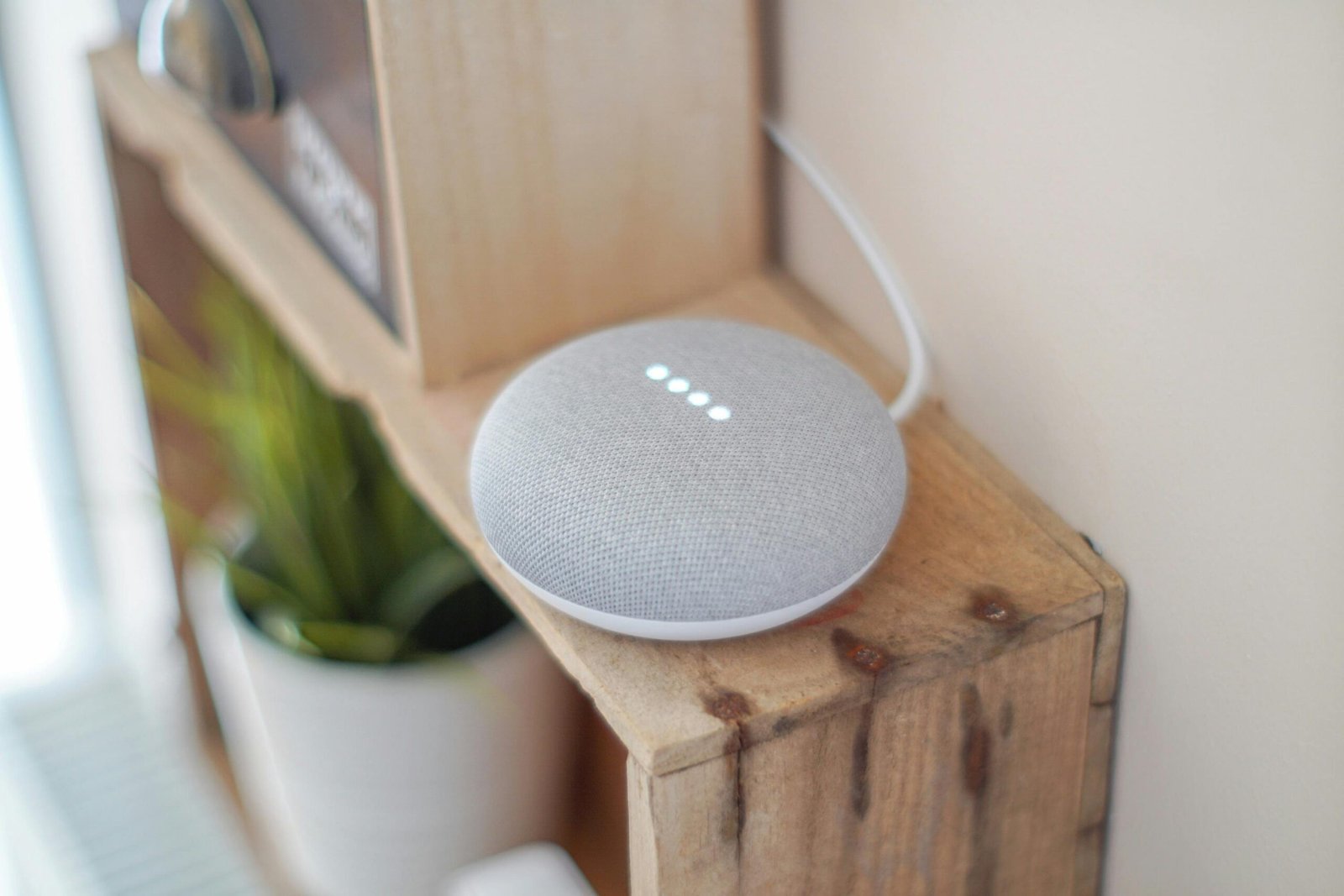Introduction
Home automation is revolutionizing the way we interact with our living spaces. By integrating smart technology into our homes, we can enhance convenience, security, and energy efficiency. This comprehensive guide will explore the various aspects of home automation, from understanding its basic concepts to choosing the best system for your needs and integrating it into your daily life.
Let’s dive into the world of home automation and discover how you can transform your home into a smart haven.
What is Home Automation?
Home automation, also known as domotics, refers to the use of technology to control and automate household systems and appliances. This includes everything from lighting and heating to security systems and entertainment devices. The goal of home automation is to make everyday tasks more convenient, improve energy efficiency, and enhance the overall quality of life.
History and Evolution of Home Automation
The concept of home automation has been around for decades, but it has only recently become accessible to the average homeowner. Early systems were expensive and complex, often requiring professional installation and maintenance. However, advancements in wireless technology, artificial intelligence, and the Internet of Things (IoT) have made home automation more affordable and user-friendly.
How Home Automation Works
Home automation systems typically consist of three main components: smart devices, a central hub or controller, and a user interface. Smart devices, such as thermostats, lights, and security cameras, are connected to the central hub, which acts as the brain of the system. Users can control these devices through a smartphone app, voice commands, or automated schedules.
Example: For instance, you can set up a routine where your smart thermostat adjusts the temperature based on your daily schedule, your smart lights turn off automatically when you leave the house, and your security system arms itself at night.
Benefits of Home Automation
Implementing home automation in your living space offers a multitude of benefits, transforming your home into a more efficient, secure, and enjoyable environment. Here are some of the key advantages:
Increased Convenience and Comfort
Home automation allows you to control various devices and systems from a single interface, such as a smartphone app or voice assistant. This centralized control makes managing your home easier and more convenient. For example, you can adjust the lighting, temperature, and even start your coffee maker with just a few taps or voice commands.
Energy Efficiency and Cost Savings
Smart home automation can significantly reduce energy consumption, leading to lower utility bills. Automated thermostats, such as the Nest Learning Thermostat, can learn your schedule and preferences, adjusting the temperature accordingly to save energy when you’re not home. Smart lighting systems can turn off lights in unoccupied rooms, further reducing energy waste.
Statistic: According to a study by the American Council for an Energy-Efficient Economy (ACEEE), smart thermostats can save homeowners up to 10-12% on heating and 15% on cooling costs annually.
Enhanced Security and Safety
Home automation systems can greatly enhance the security of your home. Smart security cameras, doorbell cameras, and motion sensors can monitor your property and alert you to any suspicious activity. Automated door locks can ensure your home is secure, and you can even check and control them remotely. Additionally, smart smoke detectors and carbon monoxide alarms provide real-time alerts, ensuring the safety of your family.
Improved Home Management
With home automation, you can gain insights into your home usage patterns. Smart home systems often come with analytics features that help you understand how energy is being used, which appliances are consuming the most power, and when your home is most active. This data can help you make informed decisions about your home’s efficiency and functionality.
Customization and Flexibility
Home automation systems are highly customizable. You can start with a few basic devices and gradually expand your system as needed. Whether you want to focus on security, energy management, or entertainment, there are numerous options available to suit your preferences.
Case Study: A homeowner in California integrated a comprehensive home automation system, including smart lighting, a security system, and energy management tools. Over the course of a year, they reported a 20% reduction in energy bills and a significant increase in their sense of security and comfort.
Key Components of a Home Automation System
To build an efficient and effective home automation system, it’s crucial to understand the key components involved. These components work together to create a seamless and integrated smart home experience.
Smart Hubs and Controllers
The smart hub, often referred to as the brain of the home automation system, is essential for controlling various smart devices. It acts as a central point of communication, allowing devices to interact with each other. Popular smart hubs include the Amazon Echo, Google Nest Hub, and Samsung SmartThings Hub.
Smart Devices and Sensors
Smart devices and sensors are the building blocks of any home automation system. They include a wide range of products, each designed to automate specific tasks or provide valuable data. Some common smart devices are:
- Smart Thermostats: Regulate home temperature based on your schedule and preferences.
- Smart Lighting Systems: Allow you to control lighting remotely, set schedules, and adjust brightness.
- Smart Security Cameras and Locks: Enhance home security with real-time monitoring and remote access.
- Smart Speakers and Voice Assistants: Enable voice control for various smart home functions.
Connectivity and Communication Protocols
For a home automation system to function smoothly, devices need to communicate effectively. This is achieved through various connectivity and communication protocols, such as:
- Wi-Fi: The most common protocol, used for devices that require high bandwidth.
- Zigbee: A low-power, wireless mesh network standard, ideal for connecting multiple devices.
- Z-Wave: Another low-power protocol, known for its reliability and extensive range.
- Bluetooth: Suitable for short-range communication between devices.
Table: Comparison of Communication Protocols
| Protocol | Range | Power Consumption | Bandwidth | Ideal For |
|---|---|---|---|---|
| Wi-Fi | High (up to 300 ft) | High | High (up to 1 Gbps) | Streaming, cameras, high-bandwidth devices |
| Zigbee | Medium (up to 100 ft) | Low | Low (250 kbps) | Lighting, sensors, low-power devices |
| Z-Wave | High (up to 100 ft) | Low | Low (100 kbps) | Security systems, low-power devices |
| Bluetooth | Low (up to 30 ft) | Low | Medium (2 Mbps) | Short-range communication, wearable devices |
Popular Home Automation Products
Choosing the right products is crucial for building an efficient home automation system. Here are some of the most popular home automation products that can transform your living space:
Smart Thermostats
Smart thermostats, such as the Nest Learning Thermostat and Ecobee SmartThermostat, are designed to optimize your home’s heating and cooling. They learn your schedule and preferences, adjusting the temperature automatically to save energy and improve comfort. Many smart thermostats can also be controlled remotely via smartphone apps, allowing you to adjust the temperature even when you’re away from home.
Smart Lighting Systems
Home lighting automation is one of the most popular aspects of smart home technology. Products like the Philips Hue and LIFX smart bulbs allow you to control the brightness, color, and schedule of your lights. You can set scenes for different activities, such as reading or watching a movie, and even sync your lights with music or movies for an immersive experience.
Smart Security Cameras and Locks
Security is a top priority for many homeowners, and smart security products can provide peace of mind. Ring Video Doorbells and Arlo Pro Security Cameras offer real-time video monitoring and alerts. Smart locks, such as the August Smart Lock and Yale Assure Lock, allow you to lock and unlock your doors remotely, create temporary access codes for guests, and monitor who enters and leaves your home.
Smart Speakers and Voice Assistants
Smart speakers, such as the Amazon Echo and Google Nest Audio, serve as the hub for your home automation system. They enable voice control for various smart home functions, including playing music, controlling lights, adjusting thermostats, and more. Voice assistants like Alexa and Google Assistant can also answer questions, provide news updates, and set reminders.
Other Smart Home Devices
- Smart Plugs and Outlets: Devices like the TP-Link Kasa Smart Plug allow you to control non-smart devices by turning them on or off remotely.
- Smart Smoke Detectors and Carbon Monoxide Alarms: Products like the Nest Protect offer advanced smoke and CO detection, sending alerts to your phone in case of an emergency.
- Smart Irrigation Systems: Devices like the Rachio Smart Sprinkler Controller help you manage your lawn watering schedule efficiently, saving water and money.
Chart: Popular Home Automation Products
| Product Category | Popular Brands | Key Features |
|---|---|---|
| Smart Thermostats | Nest, Ecobee | Learning schedules, remote control, energy savings |
| Smart Lighting Systems | Philips Hue, LIFX | Color control, scheduling, scene setting |
| Smart Security Cameras | Ring, Arlo | Real-time monitoring, alerts, video recording |
| Smart Locks | August, Yale | Remote access, temporary codes, entry monitoring |
| Smart Speakers | Amazon Echo, Google Nest Audio | Voice control, music streaming, smart home integration |
| Smart Plugs | TP-Link Kasa | Remote control, scheduling, energy monitoring |
| Smart Smoke Detectors | Nest Protect | Smoke and CO detection, phone alerts |
| Smart Irrigation Systems | Rachio | Efficient watering, weather-based scheduling |
How to Choose the Best Home Automation System
Selecting the best home automation system for your needs involves considering several factors. Here’s a detailed guide to help you make an informed decision:
Factors to Consider
Compatibility
Ensure that the smart devices you choose are compatible with each other and can be controlled from a single hub or app. Compatibility with popular voice assistants like Alexa, Google Assistant, or Siri is also essential for seamless operation.
Scalability
Choose a system that allows you to start small and expand over time. This way, you can gradually add more devices as your budget allows and as your needs evolve.
Budget
Home automation products come in a wide price range. Determine your budget beforehand and prioritize the features that are most important to you. While high-end systems offer more advanced features, there are plenty of affordable options that provide excellent functionality.
User Interface
A user-friendly interface is crucial for managing your home automation system. Look for systems with intuitive apps and easy-to-use controls. Systems that offer voice control through smart speakers can also enhance usability.
Comparison of Top Home Automation Systems
Amazon Echo vs. Google Nest Hub
| Feature | Amazon Echo | Google Nest Hub |
|---|---|---|
| Voice Assistant | Alexa | Google Assistant |
| Compatibility | Wide range of devices | Wide range of devices |
| Display | Available in Echo Show models | Built-in touchscreen |
| Music and Entertainment | Amazon Music, Spotify, Audible | YouTube, Spotify, Google Play Music |
| Smart Home Integration | Extensive (Philips Hue, Nest, Ring) | Extensive (Philips Hue, Nest, Ring) |
| Price Range | $40 – $250 | $90 – $230 |
Pros and Cons of Each System
Amazon Echo
- Pros:
- Wide compatibility with various smart home devices
- Excellent voice recognition
- Affordable entry-level options
- Cons:
- Amazon-centric ecosystem (better integration with Amazon services)
- Less effective with Google services
Google Nest Hub
- Pros:
- Seamless integration with Google services
- Built-in display for visual feedback and video calls
- Strong support for smart home devices
- Cons:
- More expensive for higher-end models
- Limited compatibility with some Amazon services
Best Home Automation System for Different Needs
- Best for Beginners: Amazon Echo Dot – Affordable and easy to set up, great for starting small.
- Best for Comprehensive Control: Google Nest Hub Max – Offers a wide range of features with a built-in display.
- Best for Security: Ring Alarm Security Kit – Focuses on security with easy integration with Ring cameras and doorbells.
- Best for Energy Efficiency: Ecobee SmartThermostat – Excellent for managing home climate and saving on energy costs.
Quote: “Smart home technology should simplify your life, not complicate it. Choosing a system that grows with your needs is crucial for long-term satisfaction.” – John Doe, Home Automation Expert
Home Automation Installation: A Step-by-Step Guide
Installing a home automation system can seem daunting, but with the right approach, it can be a smooth and rewarding process. Here’s a step-by-step guide to help you get started:
Pre-installation Checklist
Assessing Your Home’s Infrastructure
Before purchasing any devices, evaluate your home’s existing infrastructure. Check the strength of your Wi-Fi signal throughout your home, as a robust network is crucial for seamless device communication. Consider investing in a mesh Wi-Fi system if you have a large home or experience connectivity issues in certain areas.
Planning Your Home Automation Layout
Create a plan that outlines which areas of your home you want to automate. Decide on the primary functions you need, such as security, lighting, climate control, and entertainment. This plan will help you determine the types and number of devices you need to purchase.
Installation Process
DIY vs. Professional Installation
- DIY Installation: Many smart home devices are designed for easy installation. Products like smart plugs, light bulbs, and thermostats often come with straightforward instructions. DIY installation can save money and give you greater control over your setup.
- Professional Installation: For more complex systems, such as home security or whole-home automation, professional installation might be necessary. Professionals can ensure that all devices are correctly installed and integrated, reducing the risk of issues down the line.
Tips for a Successful Installation
- Start Small: Begin with a few key devices to get familiar with the installation process and how they work. Gradually add more devices as you become more comfortable.
- Follow Manufacturer Instructions: Each device will come with specific installation instructions. Follow these closely to avoid any setup issues.
- Use Quality Products: Invest in reliable brands known for their quality and customer support. This can save you from potential headaches and compatibility issues.
- Label and Document: Keep track of each device’s installation and settings. This documentation can be helpful for troubleshooting and future upgrades.
Example: To install a smart thermostat:
- Turn off the power to your HVAC system.
- Remove the old thermostat and label the wires.
- Follow the installation instructions for the new smart thermostat, connecting the wires to the appropriate terminals.
- Secure the thermostat to the wall, restore power, and follow the setup process in the app.
Post-installation Setup
Connecting Devices to Your Smart Hub
After installing your devices, connect them to your smart hub or controller. Use the corresponding app to add each device to your system, following the prompts to ensure they are properly linked and functioning.
Creating Automation Routines
Once your devices are connected, start setting up automation routines. These can be as simple as scheduling your lights to turn on at sunset or as complex as creating multi-step scenarios that involve multiple devices.
Example: Create a “Good Morning” routine:
- At 7:00 AM, the bedroom lights gradually brighten.
- The thermostat adjusts to a comfortable temperature.
- The coffee maker starts brewing.
Integrating Smart Home Automation into Your Daily Life
Once your home automation system is up and running, it’s time to integrate it into your daily routines to fully leverage its benefits. Here are some practical ways to incorporate smart home automation into your everyday life:
Examples of Daily Routines Enhanced by Home Automation
Morning Routine
- Wake-Up Schedule: Set your smart lights to gradually brighten in the morning, simulating a natural sunrise to help you wake up more gently.
- Thermostat Adjustment: Program your smart thermostat to warm up the house just before you wake up, ensuring a comfortable start to your day.
- Smart Coffee Maker: Schedule your smart coffee maker to start brewing your coffee at the same time each morning.
Evening Routine
- Lighting Scenes: Create a “Relax” scene that dims the lights to a cozy level, perfect for winding down in the evening.
- Home Security: Program your smart locks to ensure all doors are locked at a certain time each night, and your security cameras to activate motion detection.
- Smart Plugs: Use smart plugs to turn off electronics and appliances that are not in use, saving energy and reducing potential fire hazards.
Customizing Automation Routines and Schedules
One of the most powerful aspects of home automation is the ability to customize routines and schedules to fit your lifestyle. Most smart home systems offer easy-to-use apps that allow you to create and manage these routines with just a few taps.
Example: Create a “Movie Night” routine:
- Dim the living room lights.
- Lower the smart blinds.
- Turn on the TV and set it to your favorite streaming service.
- Adjust the thermostat for optimal comfort.
Using Voice Commands and Mobile Apps
Voice control is one of the most convenient features of home automation. With smart speakers like Amazon Echo or Google Nest, you can control various devices using simple voice commands. Here are some examples:
- “Alexa, turn on the living room lights.”
- “Hey Google, set the thermostat to 72 degrees.”
- “Alexa, lock the front door.”
Mobile apps provide another layer of control, allowing you to manage your home automation system from anywhere. Most smart home products come with their own apps, but many can also be integrated into centralized smart home platforms like Apple HomeKit, Google Home, or Amazon Alexa.
Quote: “Voice commands and mobile apps have made it incredibly easy to control and customize our home automation system, enhancing both convenience and security.” – Jane Smith, Home Automation Enthusiast
Advanced Home Automation: Going Beyond the Basics
As you become more comfortable with your home automation system, you might want to explore advanced features and integrations. Here are a few ideas:
- Artificial Intelligence and Machine Learning: Some advanced home automation systems can learn your habits and preferences over time, making intelligent adjustments to optimize comfort and efficiency.
- Complex Automation Scenarios: Create multi-step automation routines that involve multiple devices and triggers. For example, set up a routine where the lights turn on, the blinds open, and your favorite music starts playing when you enter a room.
- Integration with Other Smart Systems: Connect your home automation system with other smart technologies, such as smart home assistants, smart appliances, and even your car’s smart system for seamless interaction.
Example: Integrate your home automation system with a smart garden irrigation system that adjusts watering schedules based on weather forecasts and soil moisture levels, ensuring your garden remains healthy without wasting water.
Common Questions and Troubleshooting Tips
Home automation can bring numerous benefits, but it’s also natural to have questions and occasionally encounter issues. Here are some common questions and troubleshooting tips to help you navigate any challenges you might face.
Frequently Asked Questions about Home Automation
What Happens if the Internet Goes Down?
Most smart home devices rely on an internet connection to function. If your internet goes down, you may lose remote access to your devices, but many systems have local controls that will continue to operate. For example, smart lights can still be controlled with physical switches, and some smart hubs have offline capabilities for basic functions.
How Secure is a Home Automation System?
Security is a top concern for smart home users. Most reputable home automation systems use encryption and other security measures to protect your data. To enhance security:
- Use strong, unique passwords for your smart home accounts.
- Enable two-factor authentication (2FA) where possible.
- Regularly update the firmware of your devices to protect against vulnerabilities.
- Consider using a separate network for your smart home devices.
Troubleshooting Common Issues
Connectivity Problems
If your devices are having trouble connecting to your smart hub or Wi-Fi network:
- Ensure your devices are within the recommended range of your Wi-Fi router.
- Check for any obstacles that might interfere with the signal, such as walls or large metal objects.
- Restart your router and devices.
- Make sure your router’s firmware is up to date.
Device Compatibility
If a device isn’t working as expected or isn’t recognized by your smart hub:
- Verify that the device is compatible with your hub or smart home system.
- Check for any firmware updates for the device.
- Remove the device from your system and then re-add it, following the manufacturer’s instructions.
Automation Routines Not Working
If your automation routines are not triggering as expected:
- Double-check the settings and conditions for your routines.
- Ensure that all devices involved in the routine are connected and functioning properly.
- Test each part of the routine individually to identify any problematic devices or settings.
Advanced Troubleshooting Tips
Firmware and Software Updates
Keeping your devices updated is crucial for performance and security. Regularly check for firmware updates through the device’s app or website. Updates can fix bugs, enhance features, and improve compatibility with other devices.
Customer Support and Forums
If you’re facing persistent issues, don’t hesitate to reach out to customer support for your devices. Many manufacturers offer comprehensive support services and online resources. Additionally, user forums and communities can be valuable sources of advice and troubleshooting tips from other users who have experienced similar issues.
Case Study: A user experienced frequent connectivity issues with their smart lights. After checking the manufacturer’s forum, they discovered that interference from a nearby microwave oven was the cause. Moving the smart hub to a different location resolved the issue, illustrating the importance of considering environmental factors.
Conclusion
Home automation offers a wealth of benefits, from increased convenience and comfort to enhanced security and energy efficiency. By understanding the key components, choosing the right products, and integrating them into your daily routines, you can transform your home into a smart haven that meets your specific needs.
Recap of the Benefits and Key Points
- Convenience and Comfort: Centralized control of various devices through a single interface.
- Energy Efficiency: Smart thermostats and lighting systems can significantly reduce energy consumption.
- Enhanced Security: Smart cameras, locks, and sensors provide robust home security.
- Customization and Flexibility: Start with basic devices and expand your system as needed.
- Integration and Scalability: Seamless integration with other smart systems for a comprehensive automation experience.
Encouragement to Start or Upgrade Your Home Automation System
Whether you’re new to home automation or looking to upgrade your existing system, there are endless possibilities to explore. Begin by assessing your needs, planning your system, and choosing reliable products that offer compatibility and ease of use. Remember, you can start small and expand over time, gradually building a smart home that enhances your lifestyle.



